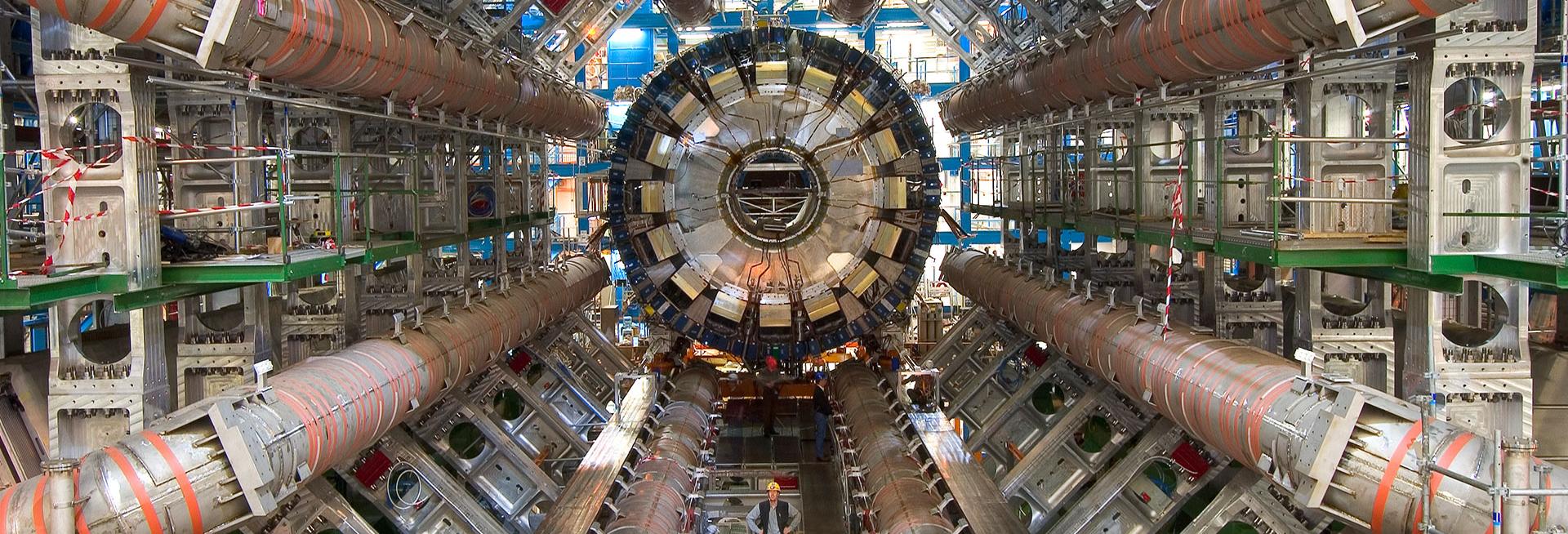Medipix
The Medipix collaboration is a group of over 20 institutes that have come together to develop a series of silicon pixel detectors that allow the advances made for Particle Physics Detector technology to be applied to other areas of science that do not have the depth of collaborative instrumentation research to be able to develop these devices independently. As a member of the Medipix4 collaboration the Oxford Physics Microstructure Detector Group (OPMD) is active in working on the characterisation and exploitation of the new Timepix4 detector. Timepix4 is a large area, high bandwidth hybrid pixel detector capable of sub-nanosecond time resolved radiation imaging and 4D particle tracking, and its application is of significant interest to a number of projects at Oxford Departments. These include: Time of Flight Mass Spectrometry, 4DSTEM Electron Microscopy, time resolved imaging for Photon Science, and micro-dosimetry for Archelogy. A major part of this is the research into new fast timing Low Gain Avalanche Diode (LGAD) sensors that can be coupled to the Timepix4 and fully exploit its timing capabilities.
As part of this project we have ongoing external partnerships with Diamond Light Source, the Rosalind Franklin Institute, and Quantum Detectors Ltd which focus on developing these detectors into systems for Electron Microscopy and Photon Science.
There is also the opportunity for international travel to attend meetings and conferences, and perform measurement campaigns at major international facilities.
Development of Pixellated Low Gain Avalanche Detectors
The search amongst irrelevant data for something of value is often compared to looking for a needle in a haystack. At the Large Hadron Collider at CERN this is more akin to searching for one needle within a huge stack of needles, all moving in different directions, forty million times a second. The hectic environment resulting from tens to hundreds of concurrent proton-proton interactions makes huge demands of the detectors which constitute modern particle physics experiments. The last few years have seen precise timing - down to tens of picoseconds - provide a solution for this. New silicon detectors based on Low Gain Avalanche Diodes are under construction for the imminent upgrades of the ATLAS and CMS collaborations, but we are only starting to enter the world of precision timing in silicon. Developing this technology into pixellated devices is just beginning, and one of the areas of detector R&D that Oxford are involved in.
To that end, the Oxford Physics Microstructure Detector lab (OPMD) are looking for an enthusiastic DPhil candidate to drive the development of pixellated LGAD devices. This will involve the design and simulation of new LGAD sensors, including capacitively coupled devices, followed by prototyping and testing of the devices in the lab and at particle beam facilities such as CERN and DESY. Merging this approach with the other strand of rapidly-evolving area of detector physics - monolithic CMOS - they will investigate the potential for devices incorporating gain on a single silicon substrate. The student will work closely with other UK groups involved in the development of LGADs, along with UK foundries fabricating these devices. Strong collaboration with the nearby Rutherford Appleton Laboratory is also to be expected.
Optimisation of support structures for future trackers
Future collider experiments will require support structures and services which will use significantly less material than current systems. This can only be achieved with modern engineering techniques using advanced composite materials (e.g. ultra-high modulus carbon fibre, high-thermal conductivity materials), state-of-the art fabrication techniques (e.g. 3d printing) and a high level of integration (e.g. co-curing).
After design the performance of the solutions developed to meet this challenge needs to be verified. This comprises measurements of mechanical stability under various thermal and mechanical loads at the sub-μm level and verification of the thermal performance. Because of the unique requirements for HEP experiments a mix of existing state-of-the-art and to-be-developed measurement techniques are required for this task.
While these R&D activities have a strong connection to mechanical engineering they require a good understanding of topics across many fields of physics (mechanics, thermodynamics, and optics) and are a great opportunity to unleash all the things you suffered through in your undergraduate years to enable future breakthroughs in particle physics.

